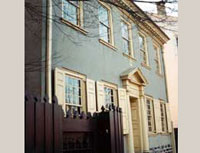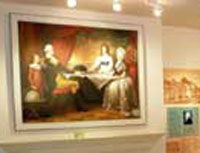Map Controls
- Reset the map
- View Trailheads
- View Trail Towns
- View Places to Visit
Map Legend
- Trailheads
- Trail Towns
- Places to Visit
- Schuylkill River Trail (SRT)
- On-Road SRT
- Proposed SRT
- Proposed On-Road SRT
Plan Your Trip
USING THE MAP
The Schuylkill River Greenways map is divided by Trailheads, Trail Towns and Places to Visit.
- Click on the category of your choice and a dropdown list of content will appear. Click any of the options within the dropdown menu and additional content will appear. Or, click on the “Places to Visit” category to see all available activities along the trail.
- Another way to navigate the map is to rollover the icons on the map. The preview will show you what kind of item it is. Click on it to reveal more information.
- Use the quick links at the top left to filter through Trailheads, Towns, and Places to Visit.
Trailheads/Parking
Trail Towns
Places to Visit
Germantown White House (Deshler-Morris House)


The house was built in 1772 by merchant David Deshler, and a mere five years later it was in the middle of the raging Battle of Germantown. British General Sir William Howe occupied the house after the Battle.
In 1793 the Yellow Fever epidemic swept through the capital of Philadelphia, and people from all over the city sought refuge in the country. President George Washington and his cabinet escaped the Fever in Germantown. During November, 1793, Washington lived in the house and met with his cabinet. Much official and important business went on in the so-called “Germantown White House.”
Colonel Franks, the second owner of the house, and the President had some disagreements about the rent and costs along the way. Franks charged Washington $131.56, which included Franks’ traveling costs to and from Bethlehem, the cost of furniture and bedding for his own family, the loss of a flatiron, one fork, four plates, three ducks, four fowl, a bushel of potatoes, and one hundred bushels of hay. Despite these extra costs, Washington returned to the house the next summer with his family.
Later the house was sold to Elliston and John Perot, and in 1834 to Elliston’s son-in-law, Samuel B. Morris. Inside the house there is a portrait of the earlier Samuel Morris, signed by Washington. The Morris family lived in the house for over one hundred years before donating it to the National Park Service in 1948. Information courtesy of ushistory.org
The Germantown White House reopened in July 2009 after a year and a half closure for major repairs. The site now features new exhibits that tell the story of the Battle of Germantown, the First Family and the entire household, including enslaved Africans.
National Park Passport Stamp available here